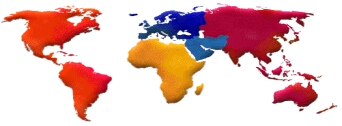 | |||
 |
KUMRU KİMYA
SANAYİ VE TİCARET LTD.ŞTİ. | ||

|
|
Kumru Kimya whose main purpose is customer satisfaction was established in 1972 and since that time it has been trading plastic raw materials. In this direction, it is trading with the most important petrochemistry manufacturers in all over the world particularly Europe, Far East and Asia. Kumru Kimya exports mainly Urea formaldehyde, melamine-formaldehyde and phenol-formaldehyde (Bakelite) moulding powder, glazing powder (lamalit), polyethylene (PE), polypropylene (PP), polyvinyl chloride (PVC), polystyrene (PS) and ABS raw materials.
Plastic raw materials are divided into two groups by their structures: thermoplastics and thermoset plastics. As it can be understood from their roots they are processed through temperature and have different features because of the difference in their chemical structures.
Thermoplastics containing plastics such as high/low density polyethylene and polyvinylchloride consist of linear chains obtained when small chemical elements tie up with each other chemically. On the other hand, thermoset plastics containing urea formaldehyde, melamine formaldehyde and phenol formaldehyde (Bakelite) raw materials are three dimensional chemical plastics obtained as a result of cross-linking of various monomers. The difference between these two plastics can be explained clearly as follows: while the structure of thermoplastics is like a raddled rope mass, the structure of thermoset plastics is like a three dimensional net on which there are knots on intersection points. Mechanical features of thermoset plastics are superior to thermoplastics’ mechanical features.
When looked at with a professional point of view, there are two main factors for a production to be successful. These are choosing the right raw material to be used in the production and processing the chosen raw material properly. The features that are wanted in the final product according to their usage areas (mechanical resistance, chemical resistance, electrical non-conductivity, heat resistance, UV filter and etc.) are very different from each other. Hence, expected performance features of them should be matched with plastic raw materials that have different features. Choosing the right raw material and processing it properly make the product high quality and economic.
There are many features that make thermoset plastics superior to thermoplastics. These features are the results of the cross-linking chemical feature of thermoset plastics. Generally, thermoset plastics are more resistant against high temperatures and their dimensional stability (resistance against deformation) and mechanic powers (resistance against abrasion) are at higher levels. Moreover, chemical stability and electrical non-conductivity of thermoset plastics are at satisfying levels and they don’t need to be strengthened with filling materials. Therefore, thermoset plastics are much more powerful than thermoplastics which are empowered by adding additives and called as engineering plastics.
In addition to many advantages of thermoset plastic group there are two disadvantages about them. The first one is that in contrast to thermoplastics, thermoset plastics cannot be recycled. Thermoplastics can be recycled after they have been processed because when they are processed through temperature they don’t change chemically. However, thermoset plastics change chemically when they are processed with compression and injection method so they cannot be used for the second time. The processing of thermoset plastic can be paralleled with boiling egg. After you have boiled the egg, it cannot be return to its old liquid form and thermoset plastics are also like this. However, the economically reflection of this problem in the recycling is limited. Burrs occurred in the production can be used again as filling material. Apart from this, thermoset plastics burn at higher temperatures in comparison with thermoplastics and the gas occurred during burning need to be removed by means of waiting.
In conclusion, you can set eyes on the evaluation of thermoset plastics in the table below.
|
ADVANTAGES |
DISADVANTAGES |
|
· Heat Resistance |
· Limitations against recycling |
|
· Deformation resistance |
· Challenges during processing |
|
· Resistance against abrasion |
· Limited shell life |
|
· Resistance against chemicals (alkaline and acids) |
|
|
· High electrical resistivity |
|
|
· Endless colour choices |
|
Apart from this, the feature of all thermoset plastics aren’t same exactly, each can gain an advantage over another. In order to choose the right raw material it is important to have knowledge about the differences of thermoset plastics within themselves. In the table below, you can find some basic features of phenol formaldehyde, urea formaldehyde and melamine formaldehyde.
|
Feature |
Phenol Formaldehyde |
Urea Formaldehyde |
Melamine Formaldehyde |
|
Heat resistance |
Very high |
High |
Very high |
|
Chemical resistance |
Medium |
Medium |
High |
|
Humidity resistance |
Very High |
High |
Very High |
|
Electrical resistivity |
Medium |
High |
Very High |
|
Resistance against abrasion |
High |
High |
Very High |
|
Easy processing |
High |
Medium |
Medium |
|
Colour choices |
Limited |
Very High |
High |
|
Brightness |
Very High |
Medium |
High |
|
Economic convenience |
High |
Very High |
Medium |
In line with the usage areas explained above, phenol formaldehyde can be used in oven buttons, kitchenware handles, telephones, automobile parts (fuse box, distributor head) and bottle caps thanks to its high heat resistance.
Thanks to its colour choices, electrical resistivity and economic convenience, Urea formaldehyde is widely used in the production of buttons, toilet seats, switches, fuse boxes, sockets, plates and trays.
Melamine formaldehyde, with its excellent features, is generally used in the production of high quality articles such as kitchen tops. It can also be used in the production of every article that requires high electrical resistivity.
What are the advantages of thermoset plastics?